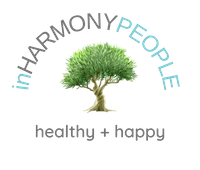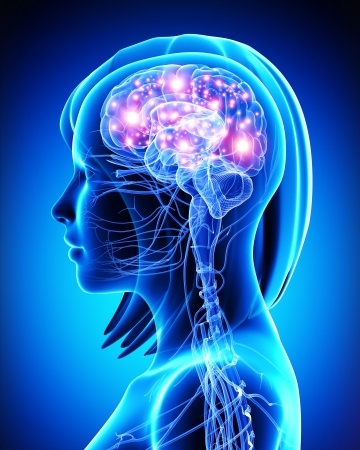[vc_row][vc_column][vc_column_text]
Detox Pathways
by Lacey Sethness
Last week we introduced the general functions of both the liver and gall bladder in the process of detoxification. This week we take a more detailed look into each of these pathways in order to gain a more clear understanding of just how important these organs are in the process of detoxification, and just how harmful they can be to our health when not functioning optimally – or at all.
The liver’s primary goal when confronted with toxic chemicals is to first neutralize them into water soluble compounds, then expel from the body. Most toxins are fat-soluble, which means they’re more difficult for the body to get rid of, just like that avocado stain on your shirt. If toxin levels in the body are elevated due to poorly functioning detoxification pathways, a majority of these will be stored in adipose tissue (fat) and cell membranes (in the phospholipid bilayer) throughout the body. The brain and the endocrine (hormonal) glands are also fatty organs, and are common sites for fat-soluble toxins to accumulate. This may result in symptoms of brain dysfunction and hormonal imbalances, such as infertility, breast pain, menstrual disturbances, adrenal gland exhaustion and early menopause. Sometimes they can stay dormant in tissues for decades, but other times, due of various activities or emotional states, they can be released. For example, during periods of weight loss, exercise, stress, and fasting, these chemicals are released into the blood stream, eventually leading to physiological problems or worse.
A recent study showed that when a group of overweight people dieted, their reduction in body fat correlated with an increase in circulating pesticides (pesticides are stored in fat tissue). The pesticides then reduced circulating active thyroid hormone (T3), thus, reducing the metabolic rate. This stored toxin release is one of the reasons why, when following a detoxification program, many individuals actually feel significantly worse before starting to feeling better. Common during the initial release of these toxins are symptoms such as headaches, poor memory, stomach pain, nausea, fatigue, dizziness and palpitations. Could this also be the reason why people on weight-loss programs plateau?
Inside the cells of the liver are a complex network of detoxification mechanisms capable of processing drugs, hormones, steroids, chemicals, pesticides, and almost every possible toxin imaginable. The first step of the detox pathway in the liver is carried out by Phase I enzymes, transforming these toxins into either (1) water-soluble molecules, so they can be easily excreted by the kidneys in urine or (2) highly reactive forms to be acted upon by phase II enzymes, which then conjugate these chemicals. The reactive forms are free radicals, which are often significantly more toxic than their original form. Therefore, it’s critical that these phases, especially Phase II, function optimally.
The Liver: Phase I
The Phase I detoxification pathway involves more than 100 enzymes known collectively as the cytochrome P450. These, as with almost all enzymes, require cofactors in order to function optimally, and include NADH, riboflavin, niacin, magnesium, iron and certain indoles from cruciferous vegetables. This pathway is a double-edged sword because it converts toxic chemicals into less harmful ones, yet if the cytochrome P450 system becomes overactive, it can produce extremely toxic free radicals (little ticking time bombs). Antioxidants like glutathione, and vitamins C and E, can disengage the little bombs, making them virtually harmless. However, if these antioxidants are lacking and toxin exposure is high, toxic chemicals become even more dangerous than at the start of the process, and miniature explosions begin occurring in different parts of the liver and body. Some of these substances can do so much harm that they can eventually cause cancer.
In addition to helpful cofactors, cytochrome P450 as has antagonistic, or inhibiting, substances. Surprisingly, the two main inhibitors in the phase I pathway are often praised for their health benefits; grapefruit and curcumin. Grapefruit juice decreases the rate of elimination of drugs from the blood and has been found to substantially alter their clinical activity and toxicity. Eight ounces of grapefruit juice contains enough of the flavonoid naringenin to decrease cytochrome P450 activity by a remarkable 30%. Curcumin, the compound that gives turmeric its yellow color, is interesting because it inhibits phase I while stimulating phase II. This effect can be very useful in preventing certain types of cancer. Curcumin has been found to inhibit carcinogens, such as benzopyrene (found in grilled meat), from inducing cancer in several animal models. It appears that the curcumin exerts its anti-carcinogenic activity by lowering the activation of carcinogens while increasing the detoxification of those that are activated. Curcumin has also been shown to directly inhibit the growth of cancer cells. As most of the cancer-inducing chemicals in cigarette smoke are only carcinogenic during the period between activation by phase I and final detoxification by phase II, curcumin in the turmeric can help prevent the cancer-causing effects of tobacco.
Additionally, if you ingest an excessive amount of toxic chemicals, the cytochrome p450 system can become too stimulated and overactive. This is known as induction of Phase I, and it leads to high levels of damaging free radicals. Substances that can trigger this include caffeine, alcohol, dioxins, saturated fats, pesticides, barbiturates, paint fumes, sulfonamides, and exhaust fumes. If Phase II can’t keep up with this bombardment, serious consequences can result.
The activity of phase I detoxification enzymes decreases in old age. Aging also decreases blood flow through the liver, further aggravating the problem. Lack of the physical activity necessary for good circulation, combined with the poor nutrition commonly seen in the elderly, add up to a significant impairment of detoxification capacity, which is typically found in aging individuals.
The Liver: Phase II
Phase II is known as the conjugation pathway, and as its name suggests, it basically adds another substance to the toxic chemical or drug to make it less harmful. This makes the toxin water soluble, so it can easily be excreted out of the body, either through the urine or bile. Through conjugation reactions, the liver turns hormones, drugs, and toxins into substances that can be eliminated from the body. Phase II acts like the bomb squad that arrives to disengage the bombs.
The six main forms of Phase II detoxification include acetylation, amino acid conjugation, glucuronidation, methylation, glutathione conjugation, and sulfation. Each of these pathways removes specific types of toxins and requires specific nutrients for their optimal functioning. Think of each pathway as a specialized bomb squad, trained to disengage specific types of bombs. Phase II can also be activated by certain compounds and slowed down by others.
For efficient phase two detoxification, the liver cells require sulphur-containing amino acids such as taurine and cysteine. The nutrients glycine, glutamine, choline and inositol are also required for efficient phase two detoxification.
Eggs and cruciferous vegetables (eg. broccoli, cabbage, Brussels sprouts, cauliflower), raw garlic, onions, leeks and shallots are all good sources of natural sulphur compounds to enhance phase two detoxification. Thus, these foods can be considered to have a cleansing action.
The Gall Bladder and Intestines
The gastrointestinal tract plays a big role in detoxification, mainly because it receives toxins bound to bile acids for excretion. What happens to this bile is directly related to what’s in the intestinal tract. As we mentioned earlier, bile needs to be thin and able to flow freely through the intestines; however, what we are seeing more and more of in today’s population are gall bladders that are clogged and full of thick, sticky and significantly toxic bile, due to either the excessive hydrogenated fats in current diets, or simply a lack of fat in general after the low-fat/no fat diet revolution, or both. No matter the cause, the result is the same: bile so thick and viscous that the gall bladder can not squeeze it out into the intestines. So now a very large portion of the toxins the liver just worked so hard to neutralize are unable to be excreted from the body, and instead sit in the gall bladder becoming increasingly toxic and harmful as time passes. Another consequence of sticky bile and a clogged gall bladder? In addition to the gall stones and possible gall bladder removal, fats that are ingested have no way to be emulsified and absorbed, leaving the body starving for healthy fats with which to build cell membranes, hormones, cholesterol, and all the other vitally important substances to which fats are the precursors.
Bile also needs to bind to dietary fiber for a quick exit out the body in the feces. If there’s insufficient dietary fiber in the intestines, most of this bile will be reabsorbed back into the bloodstream, along with the toxins it’s trying to dump.
This is why fasting may not be beneficial during detoxification. Fasting usually involves abstinence from food for two to sometimes 14 days. This releases toxins stored in fat, which will eventually make their way into the intestinal tract via bile acids. But unfortunately, the bus to take them out the body won’t be there. Fasting usually means no fiber in the intestine, and no fiber means the toxins will get reabsorbed back into the bloodstream where they will continuously build up and either get incorporated into fatty tissues or cause direct damage to tissues themselves.
As you can see, the liver, gall bladder and intestines, are some pretty big players in the detoxification game. Even function that is only slightly sub-optimal in these organs can have some significant and far-reaching effects. It is impossible to live in a non-toxic environment, but there are many things that ARE within your control when it comes to your toxic burden, and that is to detoxify multiple times throughout the year to facilitate these pathways.[/vc_column_text][/vc_column][/vc_row]







